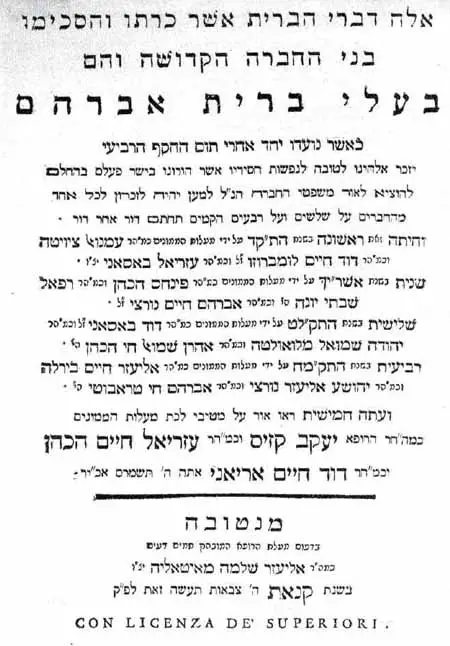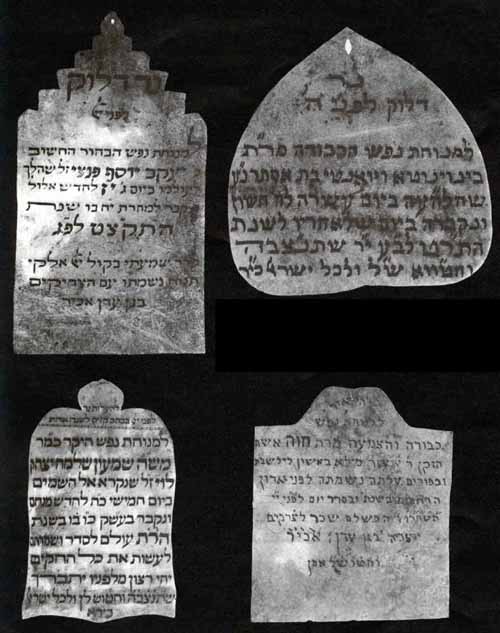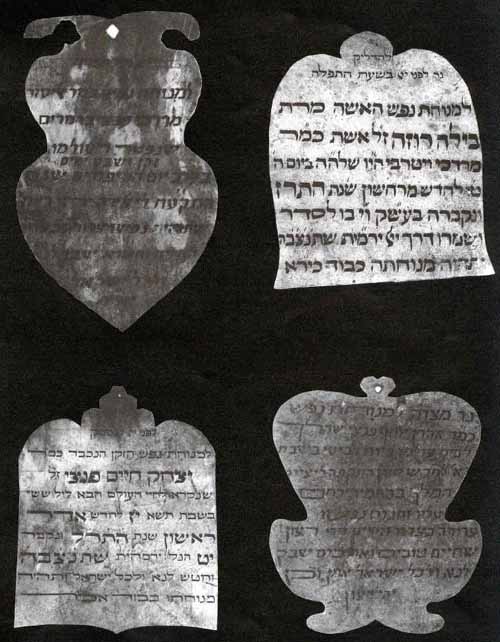The Jews of Mantua
The Rules and Regulations of the Society, Baale B'rith Abraham (Members of the Covenant of Abraham). The Society was founded in 1716 on the proposition that birth may be a personal, family matter, but circumcision, entering the "Covenant of Abraham," was an event of communal import and a cause for public celebration. To make it possible for even the poorest families to welcome the newborn with the traditional celebration, sixty individuals joined together to pledge their interest and support. In addition to dues, each member contributed four lire for each circumcision. From among the members, one was chosen by lot to act as sandek (godfather) at the ceremony. He in turn was responsible for careful use of the monies collected for the celebration and for the needs of the newborn child. When all sixty had served, a new group would come into being. In 1791, the fifth cycle was inaugurated, four other editions of the Rules having been published in 1744, 1771, 1779, and 1784. Besides the rules and regulations these pamphlets also listed the names of the sixty members.
 |
The Baale B'rith Abraham was one of some twenty such charitable, cultural, and religious societies in Mantua at the end of the eighteenth century. Among them were those obliged to dower the brides, heal the sick, visit the confined, bury the dead, console the mourners, clothe the needy, redeem captives, educate the young, and offer hospitality to the stranger, free loans to the hard-pressed, and midnight prayers for the coming of the Messiah. Such a network of voluntary societies could be found in every Jewish community of size, and the most basic ones existed in every hamlet.
Mantau, 1818-1870
Seven vellum memorial plaques list the departed to be memorialized with the dates of their death. These plaques, in candle stub or cartouche form, were placed on the memorial wall under the Ner Neshama (Lamp of the Soul) in the Scudo Cases Synagogue founded in Mantua in 1590. Among those memorialized are four members of the old and honored Finzi family and the equally aristocratic Levi, Bassani, and Viterbo families. Descendants of the family would offer their personal prayers of remembrance on the day of Yahrzeit (anniversary of death). Hanging before the entire congregation, the plaques became a congregational memorial as well.
 |
 |
Local officials and Italy’s umbrella Jewish group reached an agreement in January 2022 to turn an armory built on top the Jewish cemetery of San Nicolò in Mantua into a “House of Remembrance” museum.
Mantua is a small northern Italian town in the Po Valley with a Jewish history dating back to the 12th century. The graveyard was built in 1442. During the Holocaust, the Nazis turned the area into a makeshift concentration camp. Now the graveyard is covered by unkempt grass and shrubs and surrounded by five warehouses from its dark 20th-century past that have fallen into disrepair.
A group of Orthodox rabbis held up the plan over concerns about the destruction of the cemetery. The umbrella Union of Italian Jewish Communities group (UCEIO), however, reached an agreement to renovate the area without disturbing the cemetery. The museum will highlight the history of the Jews in the region. The project, funded by $7.4 million from the Italian government, will start in March 2022 and conclude by 2024.
Sources: Abraham J. Karp, From the Ends of the Earth: Judaic Treasures of the Library of Congress, (DC: Library of Congress, 1991).
Giovanni Vigna, “Mantua, Italy, to get Jewish museum on burial site of 17th-century Kabbalist masters,” JTA, (January 6, 2022).


